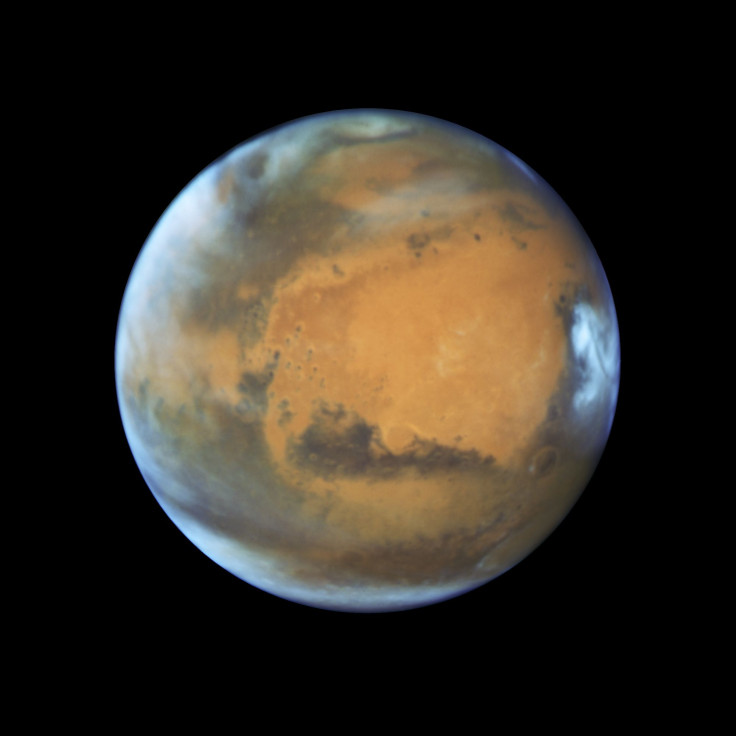NASA’s James Webb Space Telescope Slated To Investigate Mars

NASA’s upcoming James Webb Space Telescope will look into the mysteries of Mars, including taking full shots of the planet to learn about its atmosphere, during the spacecraft’s first year in service.
The telescope is scheduled to launch in spring 2019, and NASA explained that during the spring and summer of 2020 it will be in a good position to view Mars. Its ability to observe the planet’s entire sphere at once will give it an advantage over the orbiters and surface rovers that are currently operating and taking measurements — they get a much more limited perspective, although the orbiters can piece together different views to map out a complete picture.
“Webb will return extremely interesting measurements of chemistry in the Martian atmosphere,” planetary astronomer Heidi Hammel said in the NASA announcement. “And most importantly, these Mars data will be immediately available to the planetary community to enable them to plan even more detailed Mars observations with Webb in future cycles.”
In preparation for its launch, NASA has put the telescope to the test. That includes locking it in a cryogenic vacuum chamber and turning down the thermostat to almost -450 degrees Fahrenheit, the temperature at which Webb will operate. The intense cold will help the telescope pick up infrared signals from faraway places as it collects information about how the stars and planets form and searches for habitable worlds that could harbor extraterrestrial life.
Although it is destined to search across the universe, there are secrets to unlock right next door. Scientists have been trying for years to understand how and when Mars went from what was likely a warm, water-filled planet to one that is dry and cold, with almost no atmosphere.
Webb’s future observations could help solve the mystery, according to NASA, because it can measure different forms of water across Mars, among other important observations.
“Very importantly, observations of Mars will also test Webb’s capabilities in tracking moving objects across the sky, which is of key importance when investigating our solar system,” NASA’s Stefanie Milam said in the space agency’s statement.
© Copyright IBTimes 2024. All rights reserved.





















